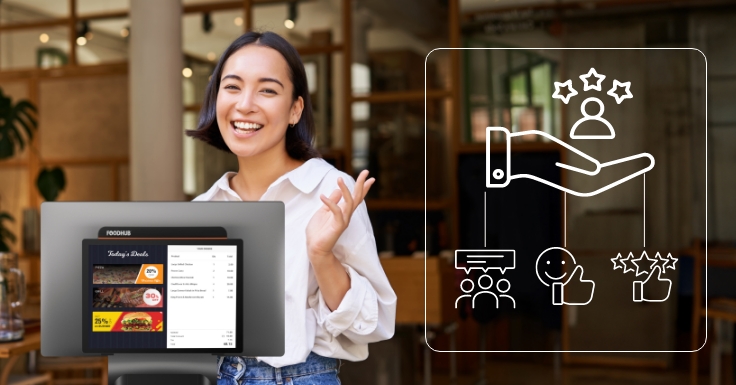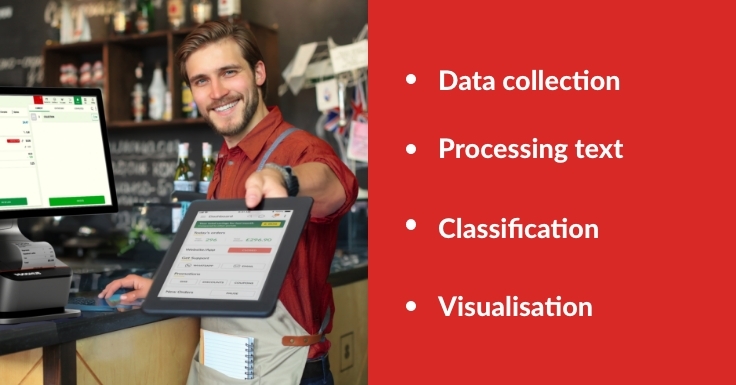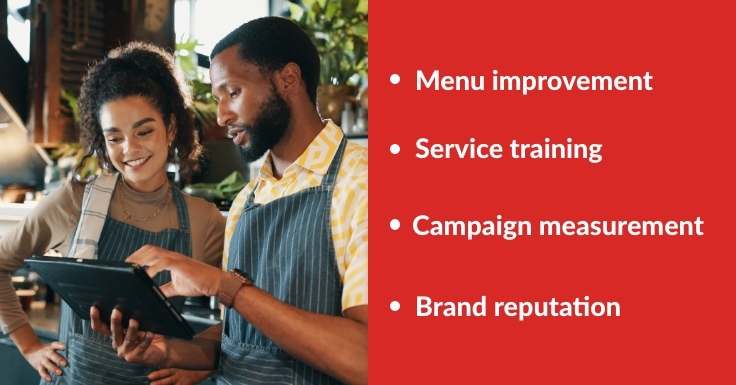What is Sentiment Analysis and How It Helps Restaurants Build Customer Loyalty


Running a restaurant today goes far beyond serving good food. Success depends on understanding how your customers feel about your brand. Every review, tweet, or online comment tells a story about their experience, but when thousands of these appear every week, it becomes impossible to analyse them all manually. This is where restaurant sentiment analysis steps in.
Sentiment analysis is the process of using artificial intelligence to evaluate customer opinions and emotions expressed in text. It identifies whether the language used is positive, negative, or neutral.
For restaurants, this means scanning reviews, survey responses, and social media mentions to understand how diners actually perceive your service, food quality, pricing, and delivery experience.
Think of it as an always-on digital assistant that reads every comment about your restaurant and gives you an instant picture of customer satisfaction.
Customer experience drives repeat business. If you know what guests love and where they’re frustrated, you can fix issues faster and strengthen loyalty.
Sentiment analysis allows restaurant owners to:
By converting raw data into clear insights, restaurants can make data-driven decisions rather than relying on guesswork.
Customer loyalty isn’t just built on discounts or freebies. It’s built on trust, and sentiment analysis helps you maintain that trust by showing that you listen and act.
According to TLC Worldwide, 73% of UK consumers remain loyal to brands that reward them with consistent value, rewards, and personal engagement. When combined with insights from sentiment analysis, these rewards can be far more targeted — improving not just engagement but retention too.
A study published in SAGE Journals found that the tone of customer reviews directly affects restaurant profitability. Restaurants with consistently positive feedback experience higher occupancy, better margins, and more repeat orders. So, monitoring and responding to customer sentiment can directly influence your bottom line.

Reviews, comments, and survey data are gathered from online platforms like Google, TripAdvisor, Deliveroo, and social media.
The data is cleaned and analysed using natural language processing tools.
The software categorises comments as positive, negative, or neutral.
Insights are presented in dashboards or reports that show overall sentiment trends.
In one machine learning study, algorithms achieved over 90% accuracy when identifying customer emotions in restaurant reviews. This demonstrates how powerful the technology has become in helping hospitality businesses listen at scale.

Collecting sentiment data is just the first step. The real advantage comes when restaurants use this data to make operational changes.
Restaurants that respond quickly to customer sentiment see better loyalty results.
Modern diners expect brands to listen and act. Sentiment analysis helps close the feedback loop by identifying areas that need attention and showing customers you value their opinions.
Here’s how you can build that loop effectively:
Studies published on PMC highlight that customer opinions expressed online offer valuable real-time insights into operational performance, food quality, and service delivery. These insights are critical to maintaining long-term loyalty.
Sentiment analysis is usually part of a broader restaurant management software. By integrating customer review monitoring directly with your ordering and reporting tools, you can easily correlate sentiment data with sales performance.
For instance, a sudden drop in delivery ratings might align with a spike in order volume, showing that operational strain affected service speed. These insights empower you to make quick adjustments before the issue escalates.
Ultimately, restaurant sentiment analysis helps build a restaurant that listens, adapts, and grows alongside its customers.
Customer sentiment is more than just online chatter; it’s the heartbeat of your business. Understanding and acting on it gives you an advantage over competitors who still rely on gut instinct.
Restaurants that embrace technology like sentiment analysis, integrated with tools such as Foodhub’s restaurant EPOS systems, can create seamless customer experiences that drive loyalty and profitability.